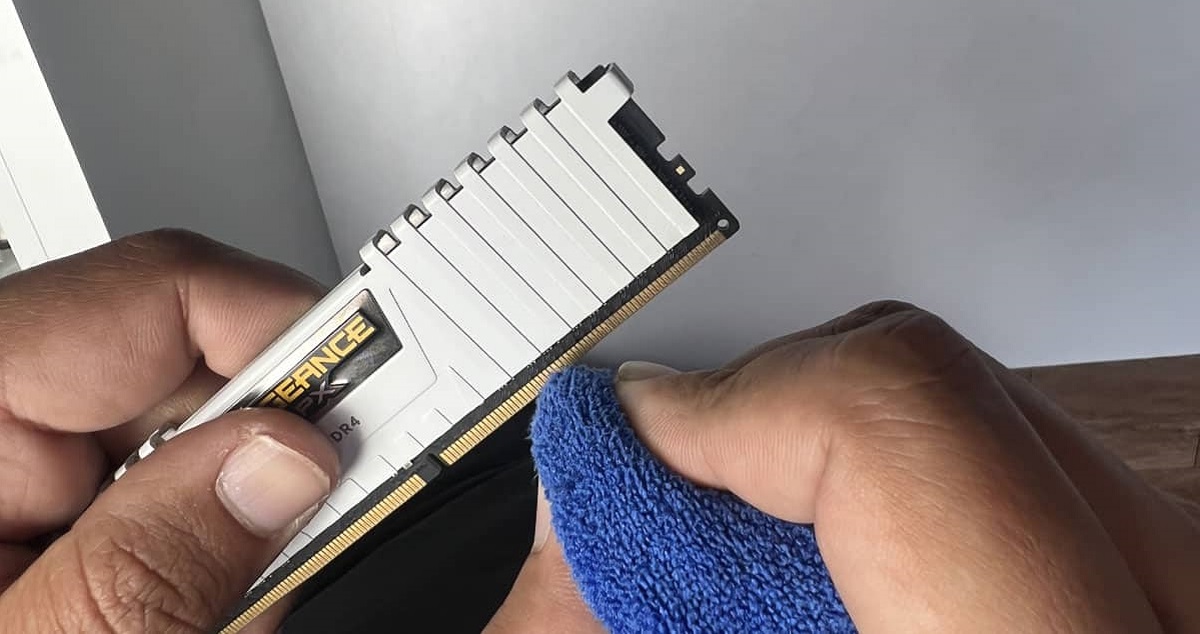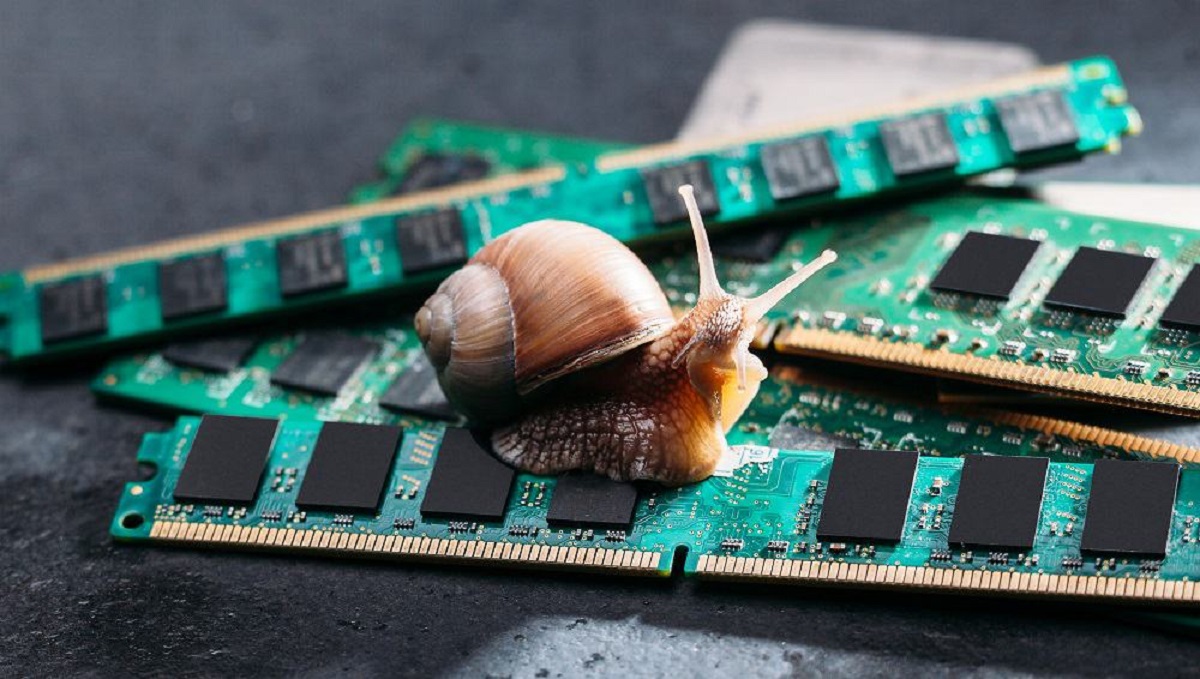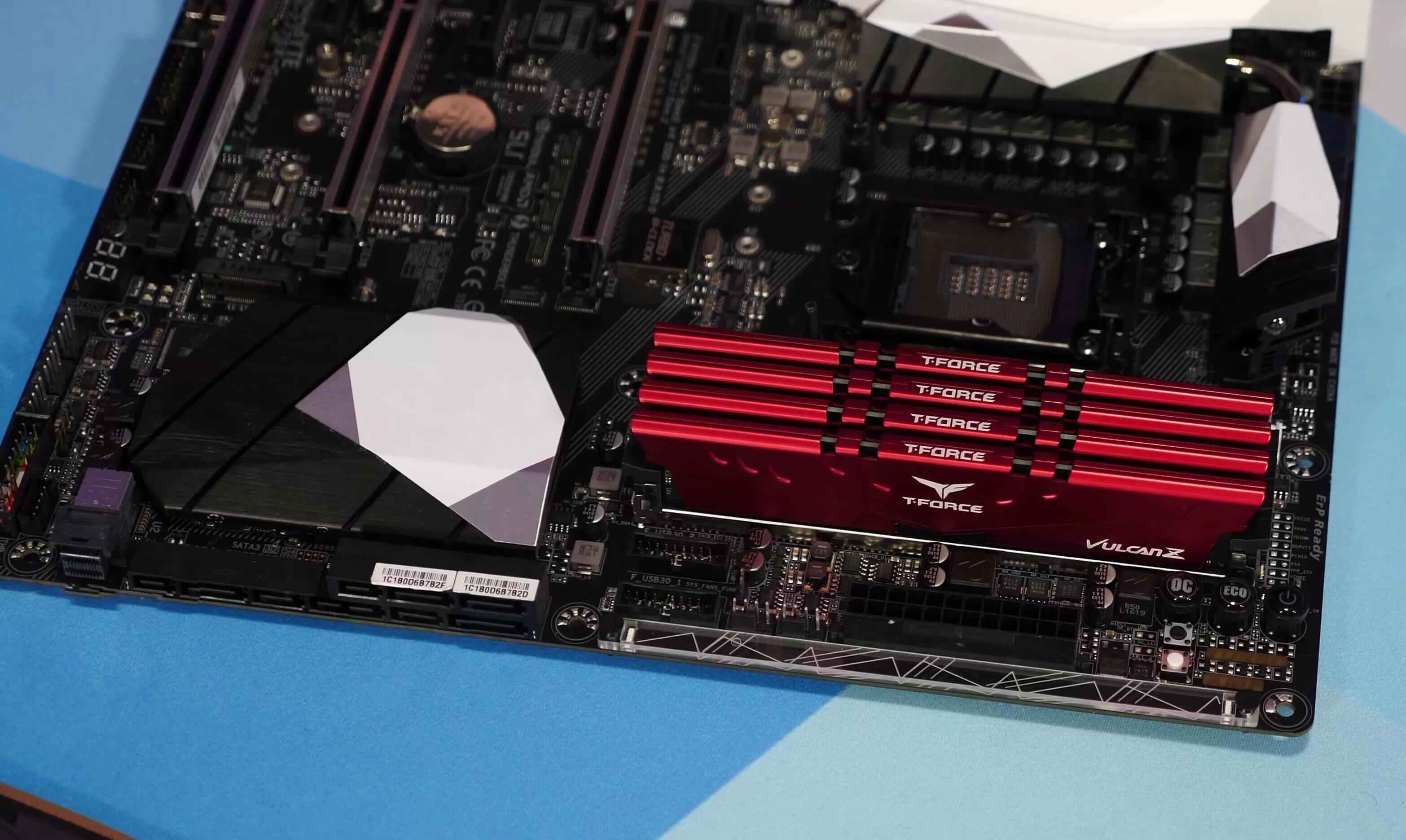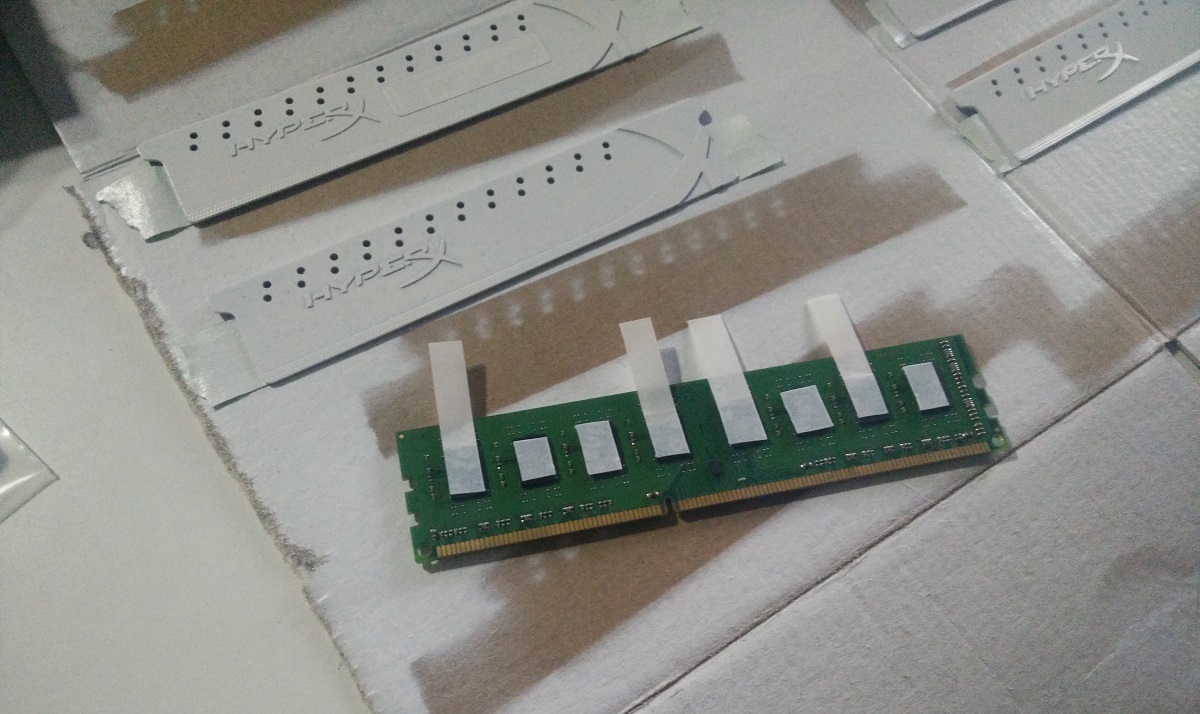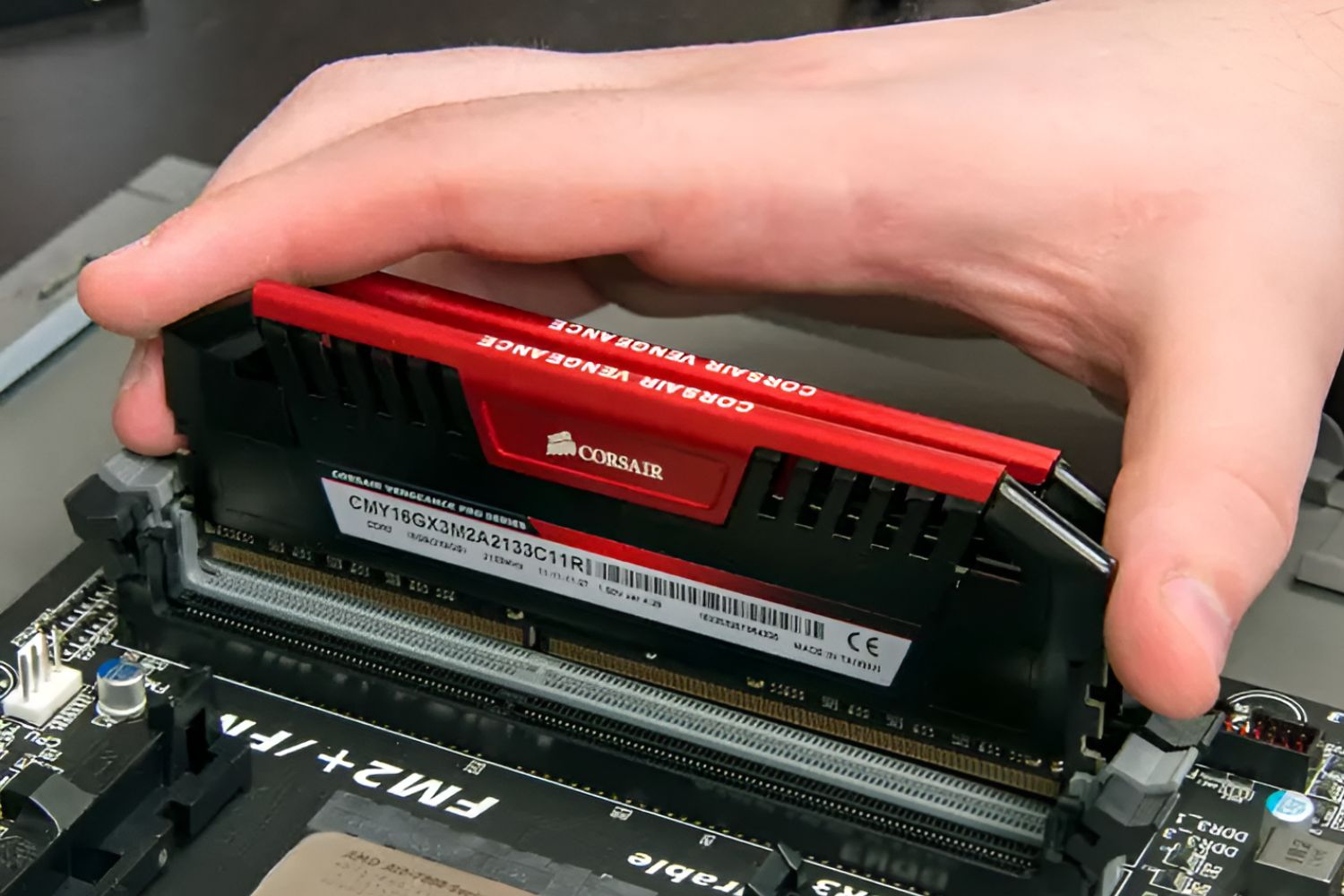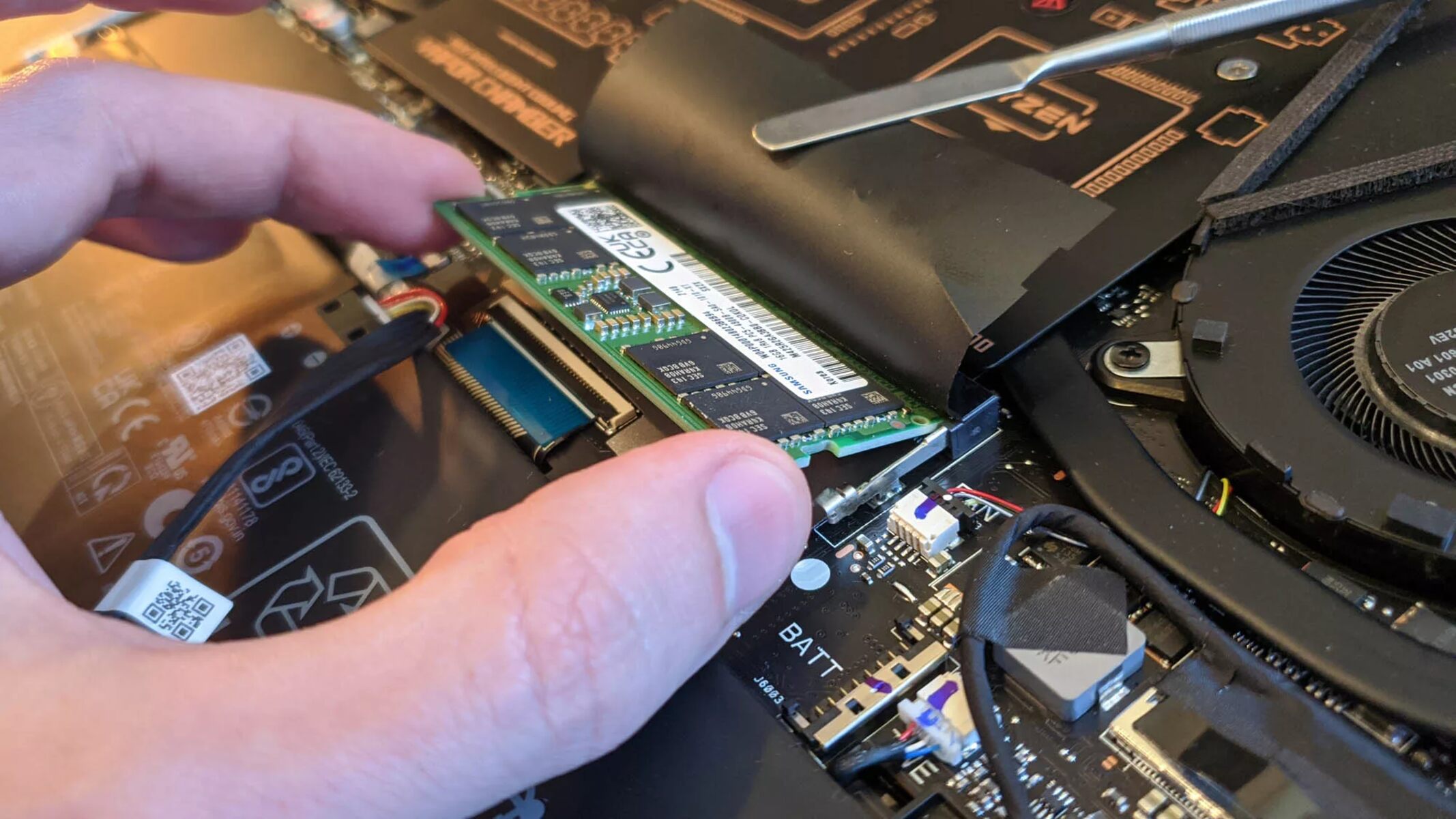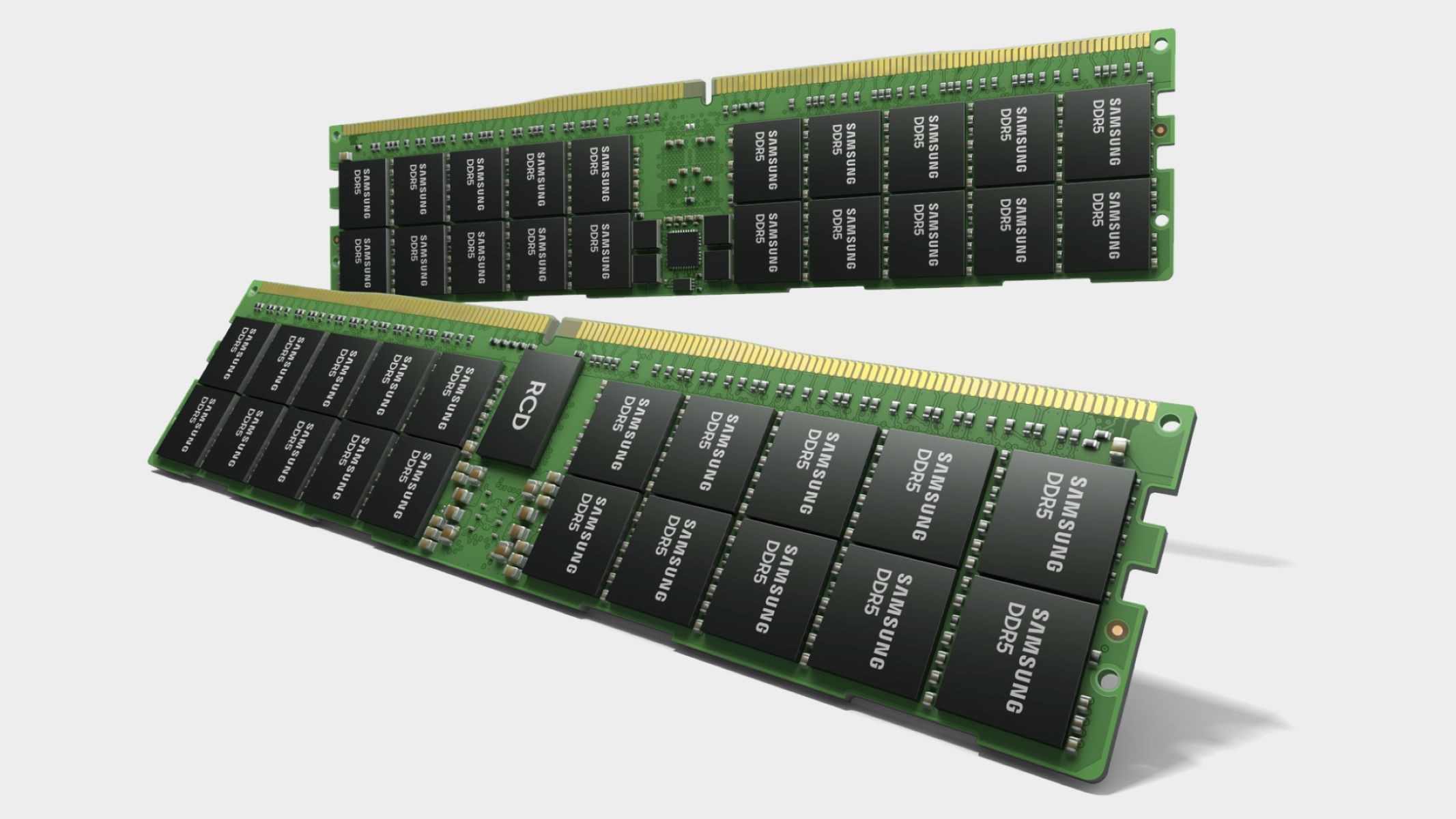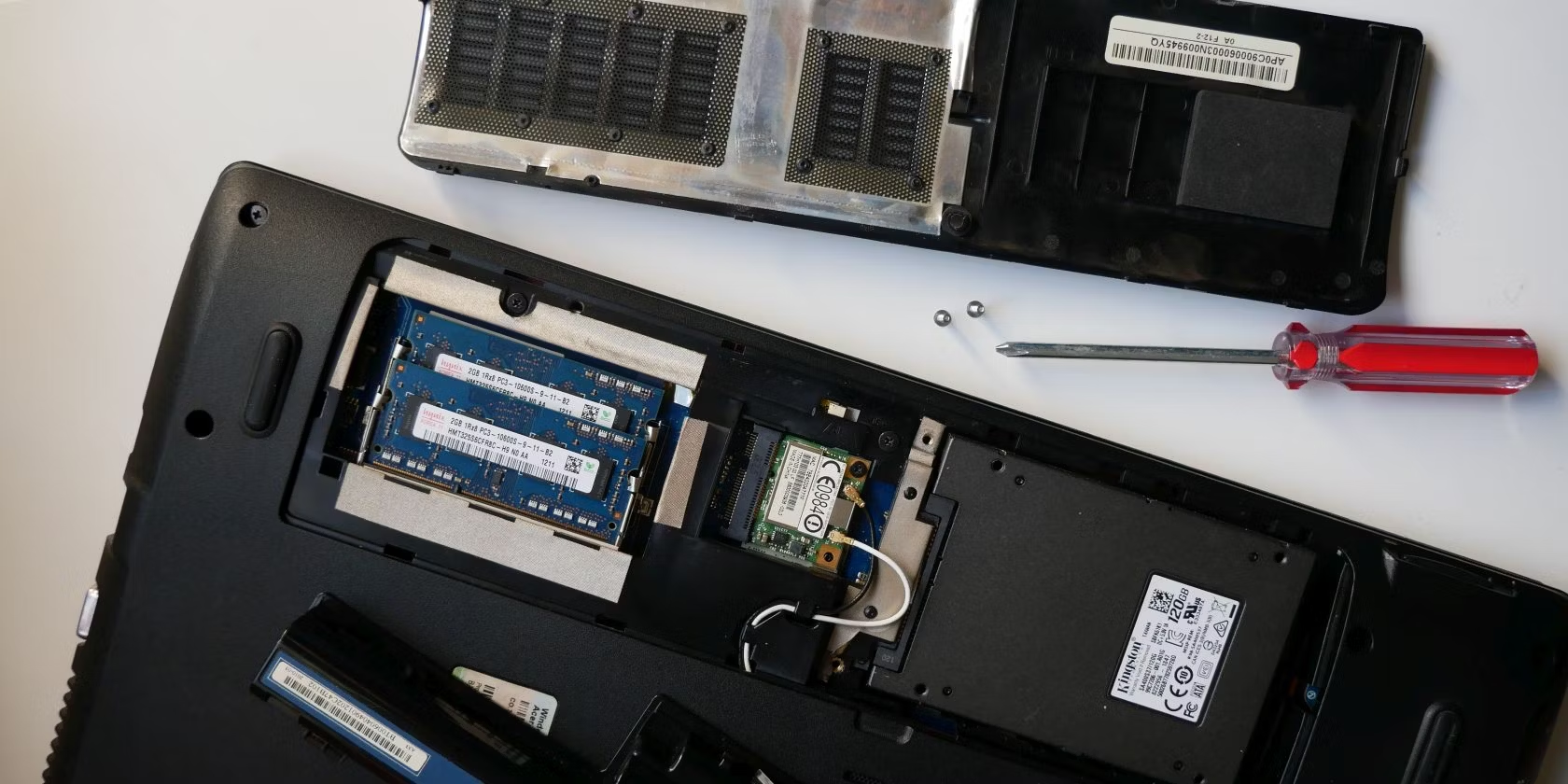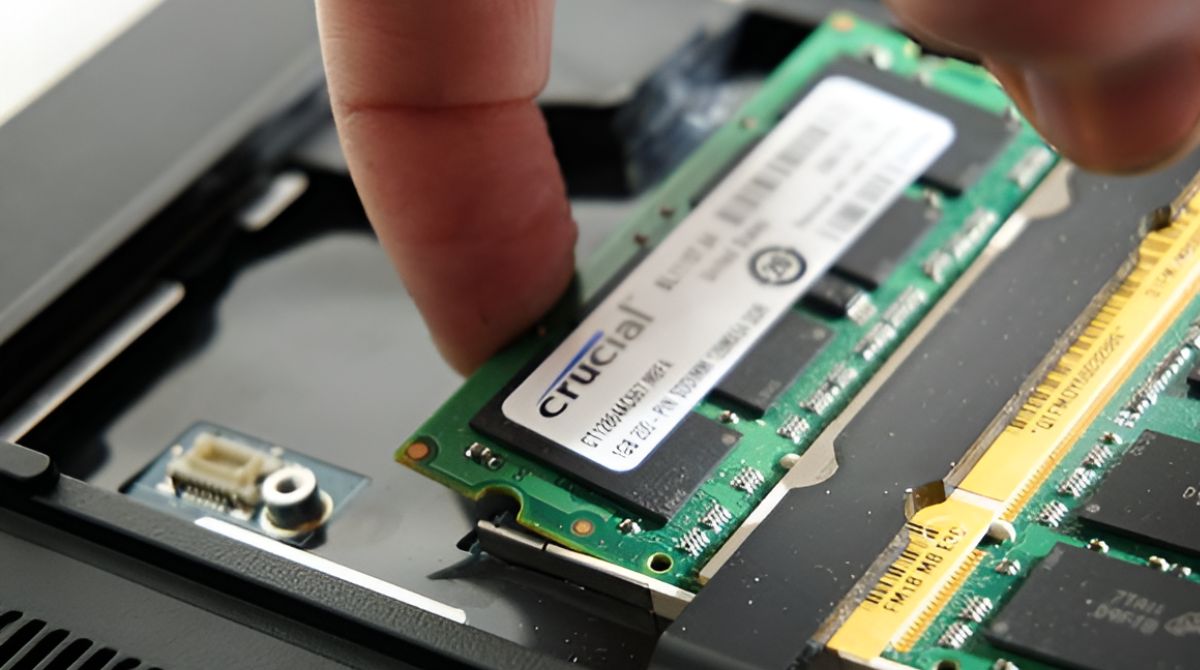Why is it important to clean RAM stick?
As a crucial component of your computer’s memory, the RAM stick plays a vital role in determining system performance and responsiveness. Over time, however, dust and debris can accumulate on the RAM stick, affecting its efficiency and potentially causing various issues. This is why it is important to regularly clean your RAM stick to ensure optimal performance and longevity.
One of the primary reasons to clean your RAM stick is to prevent overheating. Dust buildup on the RAM stick can act as an insulating layer, trapping heat and reducing the system’s ability to cool down. This can lead to thermal throttling, which causes the computer to slow down and even crash. By keeping the RAM stick clean, you can ensure proper heat dissipation and prevent potential performance issues.
Cleaning the RAM stick also helps to maintain stable and consistent system performance. When dust accumulates on the contacts and pins of the RAM stick, it can disrupt the electrical connection between the RAM module and the motherboard. This can result in intermittent errors, system crashes, or even data corruption. Regularly cleaning the RAM stick ensures a reliable connection and helps prevent these issues from arising.
In addition, a clean RAM stick can improve overall system response time. When dust particles build up, they can interfere with the electronic signals traveling through the RAM stick, leading to delays in data retrieval and processing. By removing dust and debris, you can enhance the speed at which your computer accesses and processes information, resulting in improved multitasking capabilities and a smoother user experience.
Furthermore, cleaning your RAM stick can extend its lifespan. Dust particles can contain corrosive elements that, over time, can degrade the contacts and pins on the RAM stick. This can lead to poor connectivity or even permanent damage to the component. By regularly cleaning and maintaining your RAM stick, you can help prolong its lifespan and avoid the need for premature replacement.
Overall, cleaning your RAM stick is essential for optimizing your computer’s performance, preventing overheating, maintaining system stability, and prolonging the lifespan of this critical component. Regular cleaning, along with proper hardware maintenance, will ensure that your computer operates smoothly and efficiently, allowing you to seamlessly carry out your daily tasks without interruption.
Tools Needed for Cleaning RAM Stick
Before you proceed with cleaning your RAM stick, it’s important to gather the necessary tools to ensure a thorough and safe cleaning process. While you don’t need specialized equipment, having the right tools will make the task easier and more efficient. Here are the essential tools you’ll need:
- Clean, lint-free cloth: A clean cloth is essential for wiping away dust and debris from the RAM stick. Make sure to use a lint-free cloth to avoid leaving any fibers or residue behind that could potentially interfere with the RAM’s functionality.
- Compressed air: Compressed air is a handy tool for removing stubborn dust and debris from hard-to-reach areas. Purchase a can of compressed air specifically designed for electronics to ensure a safe and efficient cleaning process.
- Isopropyl alcohol: Isopropyl alcohol is useful for cleaning the contacts on the RAM stick. It helps remove any dirt or oxidation that may interfere with the electrical connection between the RAM module and the motherboard. Use a high percentage (90% or higher) isopropyl alcohol for best results.
- Cotton swabs: Cotton swabs can be used in conjunction with the isopropyl alcohol to clean the contacts. The small, pointed tip of the swab allows for precise cleaning, ensuring that every contact is thoroughly cleaned.
- Anti-static wrist strap (optional): While not necessary, wearing an anti-static wrist strap can provide an added layer of protection when handling sensitive computer components, including the RAM stick. It helps to prevent static electricity from damaging the RAM or other parts of the computer.
Having these tools readily available will make the cleaning process more efficient and ensure that you can effectively remove dust, debris, and oxidation from your RAM stick. With the right tools in hand, you’ll be better equipped to maintain the performance and longevity of your computer’s memory.
Step-by-Step Guide to Clean RAM Stick
Cleaning your RAM stick may seem daunting, but with the right approach and a few simple steps, you can effectively remove dust and debris, ensuring optimal performance. Follow this step-by-step guide to clean your RAM stick:
- Prepare your workspace: Start by shutting down your computer and unplugging it from the power source. Find a clean, well-lit area to work on, ensuring you have enough space to comfortably handle the RAM stick and other necessary tools.
- Ground yourself: To avoid damaging the RAM or other computer components with static electricity, ground yourself by touching a metal object or wearing an anti-static wrist strap. This step is particularly important if you live in a dry environment known for static buildup.
- Remove the RAM stick: Locate the RAM stick on your motherboard. Gently press down on the retaining clips on either side of the RAM module to release it. Once released, carefully remove the RAM stick from the slot.
- Inspect the RAM stick: Take a close look at the RAM stick for any visible signs of dust, debris, or oxidation. Pay special attention to the contacts and pins, as these areas are most susceptible to buildup and may affect the RAM’s performance.
- Blow away dust: Use a can of compressed air to blow away dust and debris from the RAM stick. Hold the can upright and, keeping a safe distance, direct short bursts of air onto the RAM, focusing on the contacts and pins. Be sure to hold the RAM stick firmly and avoid using excessive force to prevent accidental damage.
- Clean the contacts: Moisten a cotton swab with isopropyl alcohol and gently wipe the contacts on the RAM stick. Be thorough but gentle, making sure to remove any dirt or oxidation. Avoid using excessive pressure, as this could damage the contacts.
- Dry the RAM stick: Allow the RAM stick to air dry for a few minutes or use a clean, lint-free cloth to gently pat it dry. Ensure that it is completely dry before reinserting it into the motherboard.
- Reinstall the RAM stick: Carefully align the RAM stick with the slot on the motherboard, ensuring it is inserted in the correct orientation. Press firmly but gently until the retaining clips on both sides click into place, securing the RAM stick.
- Power on your computer: Once the RAM stick is securely reinstalled, plug your computer back into the power source and power it on. Monitor your system for any improvements in performance or stability.
Following these step-by-step instructions will help you clean your RAM stick effectively and safely. Regularly repeating this cleaning process can help maintain the performance and lifespan of your computer’s memory, ensuring a smooth and efficient computing experience.
Troubleshooting Common Issues after Cleaning RAM Stick
After cleaning your RAM stick, it’s essential to monitor your computer for any potential issues that may arise. While cleaning your RAM stick generally improves performance and stability, there may be instances where you encounter certain problems. Here are some common issues that may occur after cleaning your RAM stick and how to troubleshoot them:
- System instability: If your computer experiences sudden crashes, freezes, or reboots after cleaning the RAM stick, it could indicate improper installation or a loose connection. Double-check that the RAM stick is securely inserted into the motherboard slot. If the issue persists, try removing and reinserting the RAM stick, ensuring it is properly seated.
- Faulty RAM stick: In rare cases, cleaning the RAM stick may reveal an underlying issue with the module itself. If your computer continues to exhibit erratic behavior or if you notice frequent memory-related errors, it’s possible that the RAM stick is faulty. Try testing the RAM stick in a different slot or using a different RAM stick altogether to determine if the issue lies with the RAM module.
- Incompatible RAM configuration: If you have recently installed new RAM or rearranged the modules, cleaning the RAM stick may cause compatibility issues. Check your motherboard’s manual or manufacturer’s specifications to ensure that your RAM configuration is optimal and supported. Try reconfiguring the RAM modules or consulting the motherboard documentation for guidance.
- Memory errors or failures: Cleaning the RAM stick should not typically result in memory errors or failures. However, if you encounter error messages related to memory during the booting process or while using applications, it’s possible that the cleaning process caused damage to the module. In such cases, consider reseating the RAM stick or testing it with diagnostic software to identify any potential issues.
- Performance degradation: While cleaning your RAM stick should improve performance, if you notice a decline in system responsiveness or overall speed, it may be due to other factors. Check for any background processes or software consuming excessive resources and ensure that your operating system and drivers are up to date. If the performance issues persist, consider seeking further assistance or troubleshooting from a professional.
Remember, it’s crucial to approach troubleshooting with patience and caution. Make sure to follow proper protocol, such as wearing an anti-static wrist strap and handling components with care. If you are uncertain about performing any troubleshooting steps, consult with a knowledgeable professional who can guide you through the process or address any potential issues that arise.
Tips to Prevent Dust Buildup on RAM Stick
Preventing dust buildup on your RAM stick is essential for maintaining optimal performance and prolonging its lifespan. Here are some handy tips to help you prevent dust accumulation on your RAM stick:
- Maintain a clean environment: Keep your computer and its surroundings clean to minimize the amount of dust that can settle on the RAM stick. Regularly dust your workspace, clean the area around your computer, and avoid placing your computer in dusty or high-traffic areas.
- Use dust filters: Utilize dust filters on your computer’s intake fans and air vents to prevent large dust particles from entering the system. These filters can help reduce the amount of dust that reaches the RAM stick and other internal components.
- Position your computer properly: Position your computer in a way that prevents dust from easily settling on the RAM stick. Elevating your computer slightly off the ground or using a raised platform can minimize dust accumulation from the floor. Additionally, avoid placing your computer near sources of dust, such as open windows, dusty surfaces, or areas with heavy foot traffic.
- Regularly clean your computer: Perform routine cleaning of your computer to remove any dust that may have accumulated. Use compressed air to blow away dust from the internal components, including the RAM stick, at least every few months or as needed. Be sure to follow proper cleaning techniques and avoid using excessive force that may damage the components.
- Control airflow: Proper airflow within your computer case can help prevent dust buildup. Ensure that there is adequate space between components to allow for efficient airflow and cooling. Use cable management techniques to keep cables organized and avoid obstructing airflow. Good airflow can help minimize dust accumulation on the RAM stick and other components.
- Avoid smoking near your computer: Smoking near your computer can lead to the buildup of nicotine and other harmful substances on the RAM stick and other components. It is best to maintain a smoke-free environment around your computer to prevent these particles from settling on sensitive electronic components.
- Avoid eating and drinking near your computer: Spills and food crumbs can attract dust and cause it to stick to the RAM stick. To minimize the risk of accidental spills and food debris, it’s best to avoid eating and drinking near your computer.
By following these tips and incorporating them into your computer maintenance routine, you can significantly reduce the amount of dust that accumulates on your RAM stick. This will help ensure optimal performance and longevity for your computer’s memory, allowing you to enjoy a smooth and efficient computing experience.
Conclusion
Keeping your RAM stick clean and free from dust and debris is essential for maintaining optimal computer performance and longevity. By regularly cleaning your RAM stick and following preventive measures, you can ensure that it operates at its full potential, providing a smooth and efficient computing experience.
The importance of cleaning your RAM stick cannot be overstated. Dust buildup on the RAM stick can lead to overheating, system instability, and performance issues. By removing dust and debris, you can prevent these problems and ensure proper heat dissipation, reliable electrical connections, and quick data retrieval and processing.
With a few basic tools such as a clean cloth, compressed air, isopropyl alcohol, and cotton swabs, you can effectively clean your RAM stick. Follow the step-by-step guide provided to safely remove and clean the RAM stick, always taking precautions to protect against static electricity and handle the component with care.
It’s important to troubleshoot any potential issues that may arise after cleaning your RAM stick, such as system instability or memory errors. By carefully identifying and addressing these problems, you can ensure that your computer continues to run smoothly.
To prevent dust buildup on your RAM stick, maintain a clean environment, utilize dust filters, position your computer properly, regularly clean your computer, control airflow, avoid smoking and eating near your computer, and follow good maintenance practices. These measures will help minimize dust accumulation and prolong the lifespan of your RAM stick.
In conclusion, regular cleaning and maintenance of your RAM stick are vital to ensure optimal computer performance and reliability. By incorporating the tips and guidelines mentioned in this article, you can take proactive steps to keep your RAM stick clean and prevent potential issues, ultimately improving your overall computing experience.







